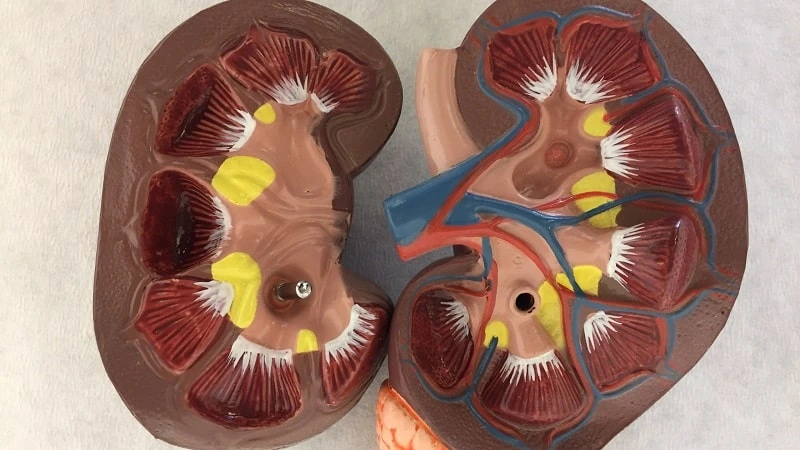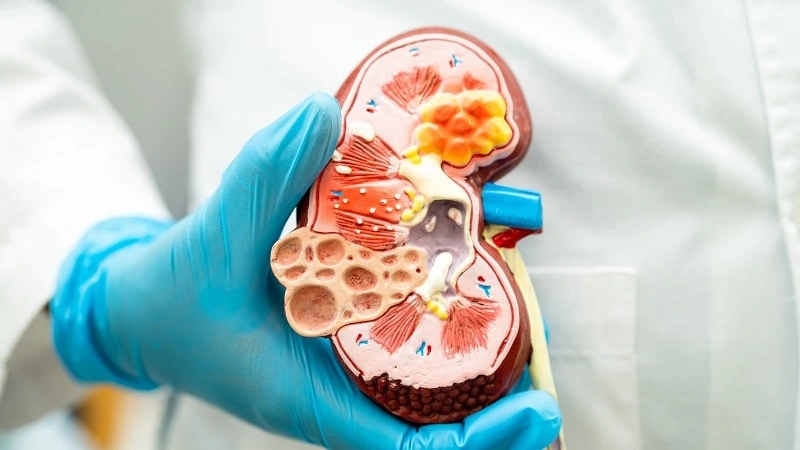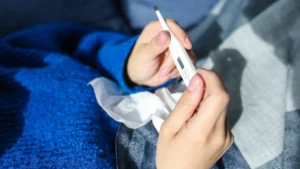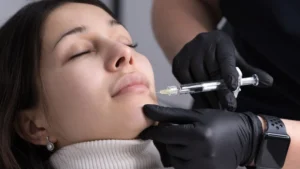Kidney transplantation is a life-changing procedure that offers renewed hope and improved quality of life for individuals with end-stage renal disease. During the transplantation process, stents play a crucial role in facilitating the proper functioning of the transplanted kidney. These tiny, flexible tubes are inserted into the ureter, allowing urine to flow from the kidney into the bladder. However, once the transplanted kidney has sufficiently healed and established its functionality, the time comes for the stent to be removed. In this article, we delve into the topic of stent removal after kidney transplant, exploring the significance of this procedure in ensuring a seamless recovery.
We will discuss the process of stent removal, recovery and follow-up care, address common concerns, and share patient experiences to provide a comprehensive understanding of this essential aspect of post-transplant care.
The Role of Stents in Kidney Transplants
Stents play a vital role in facilitating successful kidney transplants by ensuring proper urine flow and promoting healing.
Understanding the significance of stents in this procedure is crucial for patients undergoing kidney transplantation. In this section, we explore the active role of stents in kidney transplants.
Facilitating Urine Flow:
During the kidney transplant surgery, a stent is placed in the ureter, a tube connecting the kidney to the bladder.
The stent acts as a temporary internal support, ensuring the unobstructed flow of urine from the transplanted kidney to the bladder.
By maintaining an open pathway, stents prevent complications such as urinary leakage and potential damage to the transplanted kidney.
Promoting Healing:
Stents also contribute to the healing process following kidney transplantation. They provide support to the ureter, reducing the risk of post-surgical complications such as strictures or narrowing of the ureter.
By stabilizing the ureter, stents facilitate the healing of the surgical site and help the transplanted kidney integrate more effectively with the recipient’s urinary system.
Preventing Ureteral Obstruction:
In some cases, the transplanted kidney’s connection to the recipient’s urinary system may encounter challenges due to factors like surgical technique, anatomical differences, or post-operative swelling.
Stents act as a protective measure by preventing ureteral obstruction, ensuring that urine can flow freely, and reducing the risk of complications such as hydronephrosis (excessive urine backup) and potential damage to the transplanted kidney.

Stent Removal Process
The removal of stents after a kidney transplant is an essential step in the recovery process. This section provides a detailed explanation of the stent removal process, highlighting the various aspects involved.
Read More: Can Vaping Cause Kidney Stones?
Timing of Stent Removal:
The timing of stent removal after a kidney transplant varies depending on individual factors, including the patient’s healing progress, urinary system functionality, and the surgeon’s recommendation.
Typically, stent removal takes place within a few weeks to a few months after the transplant. The healthcare team closely monitors the patient’s condition to determine the optimal timing for stent removal.
Evaluation for Stent Removal:
Before the stent removal procedure, the patient undergoes a thorough evaluation to ensure that the transplanted kidney is functioning properly, the surgical site has healed sufficiently, and there are no complications or obstructions that may hinder the stent removal process.
Tests such as kidney function tests, imaging studies, and urine analysis are conducted to assess the patient’s readiness for stent removal.
Preparation for Stent Removal:
Prior to the stent removal procedure, the patient receives instructions on necessary preparations.
This may involve fasting for a certain period of time, discontinuing specific medications that could interfere with the procedure, and ensuring the patient’s comfort during the process.
The healthcare team provides detailed guidelines to ensure a smooth and successful stent removal.
Stent Removal Procedure:
The stent removal procedure is typically performed in an outpatient setting, and local anesthesia may be used to minimize discomfort.
The surgeon uses a cystoscope, a thin tube with a camera, inserted through the urethra to visualize the stent. Using specialized instruments, the surgeon grasps the stent and gently removes it from the ureter.
The process is usually quick and relatively painless, though some patients may experience mild discomfort or a sensation of urgency during the procedure.
Read More: Can Creatine Cause Kidney Stones?
Potential Complications and Risks:
While stent removal is generally safe, there are potential risks associated with the procedure. These can include temporary bleeding, urinary tract infection, ureteral injury, or re-obstruction of the ureter.
However, with the expertise of the surgical team and proper precautions, the risk of complications is significantly reduced.

Recovery and Follow-up Care
After the removal of stents following a kidney transplant, proper recovery and follow-up care are crucial for the patient’s well-being and the success of the transplant.
This section explores the key aspects of recovery and follow-up care after stent removal.
Post-Stent Removal Recovery Process:
Following stent removal, patients may experience mild discomfort, urinary urgency, or frequency for a short period.
These symptoms usually subside within a few days as the urinary system adjusts to the absence of the stent.
It is important for patients to follow the healthcare team’s instructions regarding rest, physical activity, and hygiene during the recovery period.
Management of Pain and Discomfort:
To manage any discomfort or pain after stent removal, healthcare providers may recommend over-the-counter pain relievers or prescribe appropriate medications.
It is essential for patients to communicate any persistent or severe pain to their healthcare team for further evaluation and management.
Medications and Instructions for Post-Stent Removal Care:
Patients will receive specific instructions regarding medications and care after stent removal. This may include continuing immunosuppressive medications as prescribed, adhering to a recommended diet and fluid intake, and practicing good hygiene to prevent infection.
Patients should follow these instructions diligently to support the healing process and minimize complications.
Importance of Regular Follow-up Appointments:
Regular follow-up appointments with the transplant team are crucial for monitoring the progress of the transplanted kidney and addressing any concerns or complications.
These appointments may include blood tests to assess kidney function, imaging studies to evaluate the urinary system, and consultations with healthcare professionals specialized in transplant care.
Patients should prioritize attending these appointments as scheduled to ensure comprehensive post-transplant care.
Read More: Pain in Lower Abdomen and Buttocks in Female
Emotional Support and Counseling:
Recovering from a kidney transplant involves not just physical healing but also emotional well-being. It is normal for patients to experience a range of emotions, including anxiety, fear, or stress during the recovery process.
Seeking emotional support from loved ones, support groups, or professional counselors can provide valuable guidance and help patients cope with the challenges they may encounter during the recovery phase.
Patient Experiences and Tips
Hearing about the experiences and tips from patients who have undergone stent removal after a kidney transplant can provide valuable insights and guidance for others going through the same process. In this section, we share some patient experiences and tips to help individuals navigate their own stent removal journey.
Story of Patient A:
Patient A, who underwent stent removal after a kidney transplant, shares their experience. They emphasize the importance of open communication with the healthcare team throughout the process.
Patient A found comfort in discussing their concerns, fears, and any discomfort they experienced.
By maintaining a strong partnership with their healthcare provider, they felt more confident and reassured during the stent removal procedure and recovery period.
Tips for Managing Discomfort:
Several patients recommend taking over-the-counter pain relievers as directed by their healthcare provider to manage any post-stent removal discomfort.
Applying a warm compress to the lower abdomen or back may also help alleviate mild discomfort. It is important to avoid strenuous activities and follow the healthcare team’s instructions for optimal recovery.

Advice for Coping with Urinary Symptoms:
Patients commonly suggest drinking plenty of fluids to stay hydrated and promote healthy urine flow. Some find it helpful to gradually increase their fluid intake after stent removal to flush out any residual debris or blood clots.
Additionally, practicing Kegel exercises (pelvic floor muscle exercises) can assist in regaining bladder control and reducing urinary urgency or leakage.
Coping Strategies for Emotional Well-being:
Patients acknowledge that the recovery period after stent removal can be emotionally challenging.
They recommend seeking emotional support from family, friends, or support groups who understand the unique journey of kidney transplantation.
Engaging in activities that promote relaxation, such as meditation, yoga, or hobbies, can also help reduce stress and anxiety during the recovery phase.
Read More: Reasons for Fatigue in Females
Encouragement to Stay Positive:
Many patients emphasize the importance of maintaining a positive mindset throughout the stent removal process and recovery.
They remind others to celebrate each small milestone achieved, such as decreasing discomfort or improved urinary function.
By focusing on the progress made rather than dwelling on temporary setbacks, patients can maintain a hopeful outlook and foster a faster recovery.
Embracing Patience and Self-Care:
Patients stress the significance of patience during the recovery process. It takes time for the body to heal and adjust after stent removal.
Practicing self-care, including getting adequate rest, maintaining a balanced diet, and following healthcare provider recommendations, is vital to support the body’s healing process.
Conclusion
Stent removal after a kidney transplant is a crucial step in the recovery process, ensuring proper healing and functionality of the transplanted kidney.
Understanding the role of stents, the stent removal process and the subsequent recovery and follow-up care is essential for patients undergoing this procedure.
By facilitating urine flow, promoting healing, and preventing complications, stents play an active role in kidney transplants.
The stent removal process is typically quick and relatively painless, with patients experiencing a smooth recovery afterward. However, it is important to follow post-stent removal instructions, attend regular follow-up appointments, and seek emotional support when needed.
Common concerns and FAQs related to stent removal after a kidney transplant include inquiries about pain, risks, recovery time, resuming normal activities, and the need for future stents.
Addressing these concerns with accurate information and sharing patient experiences and tips can help individuals navigate their own stent removal journey with confidence.
In conclusion, the successful removal of stents after a kidney transplant contributes to the overall well-being and long-term success of the transplant.
By following medical guidance, staying informed, and seeking support, patients can optimize their recovery and enjoy the benefits of a functioning transplanted kidney.
FAQs
How long does the stent removal procedure take?
The stent removal procedure typically takes a few minutes to complete.
Is stent removal a painful process?
While patients may experience mild discomfort during stent removal, the procedure is generally not considered painful.
Are there any risks or complications associated with stent removal?
While rare, potential risks and complications include temporary bleeding, infection, ureteral injury, or re-obstruction of the ureter.
When can I resume normal activities after stent removal?
Patients can gradually resume normal activities as guided by their healthcare team. Strenuous activities should be avoided initially.
How long does it take to recover after stent removal?
Recovery time varies, but most patients experience a quick recovery with mild discomfort subsiding within a few days.
Will I need additional stents in the future?
In most cases, additional stents are not required after the initial stent removal. However, individual circumstances may vary.
What should I do if I experience persistent or severe pain after stent removal?
Contact your healthcare team if you experience persistent or severe pain after stent removal for further evaluation and management.
Can I shower or bathe after stent removal?
In general, it is safe to shower or bathe after stent removal. However, it is important to follow your healthcare provider’s instructions.
How often should I have follow-up appointments after stent removal?
Follow-up appointment frequency varies but is typically scheduled at regular intervals during the first year post-stent removal, and less frequently thereafter.
Medical References
- Chacko M. Stent-related complications after kidney transplantation. Indian J Urol. 2012;28(4):434-439.
- Al-Khamis A, Levesque MH, De Baere T, et al. Ureteral stenosis following renal transplantation: treatment by self-expandable metallic stents. Cardiovasc Intervent Radiol. 2012;35(5):1051-1055.
- Han WK, Mulley WR, Kelly DJ, et al. Evaluation of ureteric stent diameter on bacterial colonisation and biofilm formation. BJU Int. 2012;110(11 Pt C):E1021-E1024.
- Elias JW, Boyce AM, Gupta G. Strategies to reduce stent discomfort following kidney transplantation: a systematic review. Ann Transplant. 2019;24:429-438.
- Licht C, Winkelmayer WC, Hildebrandt T, et al. Acute complications after kidney transplantation. Transplantation. 2005;80(4):441-447.
- Rademacher S, Harding M, Krüger S, et al. Safety and efficacy of early outpatient ureteral stent removal after renal transplantation: a retrospective study. Transplant Direct. 2020;6(3):e530.







